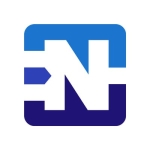What is our primary use case?
We use it for perimeter security because it gives application layer security and we also use it for VPN access.
We use the PA-3200 and PA-200 models. In terms of the version, we are one version behind the latest one. The latest version is 11, and we are still on version 10.
How has it helped my organization?
The biggest benefit we have seen from it is the ability to identify the traffic of our networks based on the application ID that Palo Alto can provide. Palo Alto firewalls have the most extensive App-ID library, so we are able to identify which applications are necessary for business and which ones are not. We can then block those that are not crucial for business at the firewall itself, so App-ID in the firewall was the biggest benefit to us.
Palo Alto NGFW embeds machine learning in the core of the firewall to provide inline, real-time attack prevention, which is important and very helpful. I wouldn't be able to compare it to any other product because we have used Palo Alto for eight years, but the machine learning that they have embedded into their OS has been very helpful. Based on the learning that they have done, they have been able to analyze the traffic and coordinate traffic patterns to alert us about possible malware and even block it.
It provides a unified platform that natively integrates all security capabilities. Palo Alto NGFW has been able to give us all that we need from one particular appliance itself. If we wanted, we could have also used the DNS feature, and in that case, one device could have met all our needs.
Because it's a unified platform, management is easy. You have to learn only one particular management interface. Once our IT team gets familiar with the management interface, it's easier for them to apply security policies, monitor the traffic, and manage the plans using the same GUI. There are no learning curves for different products.
We try to keep our security fairly tight. The policies that we have created on the Palo Alto NGFW have been based on security requirements. As of now, we haven't detected anything that would point to a hole in our environment, so it is very hard to say whether Palo Alto NGFW’s unified platform helped to eliminate any security holes.
It has helped to eliminate multiple network security tools and the effort needed to get them to work together with each other. It has helped us consolidate into one vendor. Earlier, we used to have an appliance for the firewall, and then we had an appliance for VPN. We had a separate appliance for the collection and correlation of data. We have eliminated all of those. They are now in one box. The same firewall gives us security policies and lets us collect all the data about the traffic flowing in and out of the network and correlate events. It has helped us eliminate the VPN appliances that we were using in the past. It has helped us to eliminate two other vendors and bring all the services into one.
The single-pass architecture is good. Everything is analyzed just once, so it improves the performance.
What is most valuable?
Application layer firewalling has been the most valuable feature because it gives thousands of application IDs that we can use to control traffic into and out of our environment. The second most important feature has been the GlobalProtect VPN feature.
What needs improvement?
The only problem that I see with the Palo Alto NGFW being an all-in-one appliance is that because of the different features that are being put into a single appliance, the OS tends to be beefier. Over the eight years, we have seen that the number of features or analyses being put into the appliance itself has a tendency to slow down the appliance, especially at the time of bootup. So, any time we are doing maintenance work, the time required for the appliance to boot up and be fully functional again is significantly longer than eight years ago. They could find a way to make this all-in-one appliance faster.
They should also make the documentation much easier to understand. Given all the features that they have built into the firewalls, it should be easier for the end users to understand the product and all the features available on the product. They should be able to utilize the product to the maximum capabilities. The documentation and the tech support available need to improve. The tech support of Palo Alto has deteriorated over the past few years, especially after our pandemic. Getting tech support on our issues is very difficult. They could definitely improve on that.
For how long have I used the solution?
I've been using it for about eight years.
What do I think about the stability of the solution?
It's very stable. We have had no issues. There are only two issues that I recall ever happening on our firewalls. The first one was when they released an application ID that caused a problem on the network, but they were able to resolve it quickly within a matter of hours. The second issue was also because of the change in the OS. In both cases, the resolution was quick.
What do I think about the scalability of the solution?
In terms of scalability, they have a huge range of models, so depending on what your requirements are, you can scale up from the very base model that goes from 100 megabits per second to the largest one that goes to 10 gigs per second. They have a wide range of appliances that you can upgrade to based on your needs.
In terms of the traffic that can pass through the firewall, it has been fairly good for us. We have not had to upgrade our network. Being a small company, we don't have too many users. In the past eight years, we have not had to change our bandwidth for the increase in traffic. Whatever we selected four years ago, they remain the same. We have not had to upgrade the hardware capabilities just because our traffic is increasing, but in terms of feature sets, we have added more and more features to the appliances. When we started off with Palo Alto, we were only using the firewall features, and then slowly, we added a VPN for mobile users. We added a VPN for site-to-site connectivity, and the scalability has been good. We have not had to upgrade the hardware. We have just been adding features to the existing hardware, and it has not caused any deterioration in the performance.
We have about fifty users that are split between the East Coast and the West Coast. Each coast has only about twenty-five users. All in all, we have about fifty users using these products.
How are customer service and support?
It used to be good in the past, but over the last few years, it has been very bad. You open a case, and you expect somebody to get back to you and help you out with the issue. They say that based on the SLAs, somebody will get back to you within a certain number of hours for the priority ticket that you created, but that getting back actually includes the initial response where somebody is just acknowledging that they have the ticket. That does not mean that somebody provides me with the solution or takes action on it. If I open a priority one case, which means my network is down, somebody will get back to me within two hours based on the SLA, but that response only includes the acknowledgment mentioning that your case has been received. That's it. It's a different question whether someone is going to get on the phone with you or give you an email about how to troubleshoot the issue and fix that issue.
I'd rate them a six out of ten based on the response time and the quality of the responses received over the last three or four years.
How would you rate customer service and support?
Which solution did I use previously and why did I switch?
We were using Cisco's router-based firewalls. They had some advantages, but they did not have a graphical interface for configuration, which was the weakest point. Getting team members on the team who were not familiar with the command line configurations for our Cisco firewalls made us select a product that provides a graphical interface for configuration, and that was a reason for moving to Palo Alto.
How was the initial setup?
It has been fairly easy to set up. The initial setup is good. The migration to a new box can also be pretty straightforward.
I have had experience with setting it up from scratch, and it has been good. It's more on the simpler side. The initial setup to get the firewall in place with basic security principles is straightforward. When you go to the advanced features, it gets trickier.
The deployment duration depends on the complexity of the network and the kind of rules that you want to implement. The physical appliances are relatively straightforward to set up. For the base security, it doesn't take more than a couple of hours to set it up, but it can take a relatively long time to set up and configure the firewalls that sit in the cloud.
We use physical appliances and virtual appliances. The physical appliances are in our on-prem environment, and the virtual appliances are in our cloud environment. It took about four hours to set up the physical appliances from scratch, whereas the virtual or VMCD ones took a lot longer. It took two to three days to set them up.
What about the implementation team?
For the VMCD ones, we had to get help from their pre-sales support team, but for the on-prem physical appliances, we did the implementation ourselves.
What's my experience with pricing, setup cost, and licensing?
It isn't cheap. It's cheaper to replace the equipment every three years than to upgrade. We have done two refreshes of their appliances. What I have seen is that the initial hardware cost is low, but you need a subscription and you need maintenance plans. After every three years, if you're trying to renew your maintenance or subscription, that can be very costly. It's cheaper to just get a newer solution with a three-year subscription and maintenance. It's cheaper to replace your hardware completely with a new subscription plan and a new maintenance plan than to renew the maintenance subscription on existing hardware. That's the reality of the Palo Alto pricing that gets to us.
You pay for the initial hardware, and then you have to pay the subscription cost for the features that you want to use. Every feature has an extra price. Your firewall features are included with the appliance, but the antivirus feature, DNS security feature, VPN feature, URL filtering, and file monitoring features are additional features that you need to pay for. So, you pay extra for every feature that you add, and then based on the features you purchase, you have to pay the maintenance plan pricing too.
Which other solutions did I evaluate?
Before moving to Palo Alto, we did evaluate other options. In those days, we tried out the Check Point firewall. We tried out Fortinet, but Palo Alto was the one that met our needs in terms of the features available and the ease of learning its features and configuration. We went for it also because of the price comparisons.
What other advice do I have?
Try to get hold of a presales engineer and do a PoC with all the features that you're looking at before you make a purchase decision.
It isn't cheap. It's definitely the faster one. It meets all the needs. If you're looking for an all-in-one solution, Palo Alto NGFW would definitely meet your needs, but it isn't the cheapest one.
We have not used their DNS security feature because we use a competitor's product. We use Cisco Umbrella for that. The reason is that for the DNS security to work, the traffic from those endpoints needs to flow through the firewalls, but we have a lot of mobile user devices whose traffic does not flow through the firewall and we'd like them to have DNS security. We use Cisco Umbrella because that's an endpoint application that protects the endpoints from vulnerabilities based on the DNS reputation, and all the traffic from those endpoints does not necessarily need to go through a central endpoint, like a firewall.
Overall, I would rate Palo Alto NGFW an eight out of ten.
Disclosure: I am a real user, and this review is based on my own experience and opinions.
















